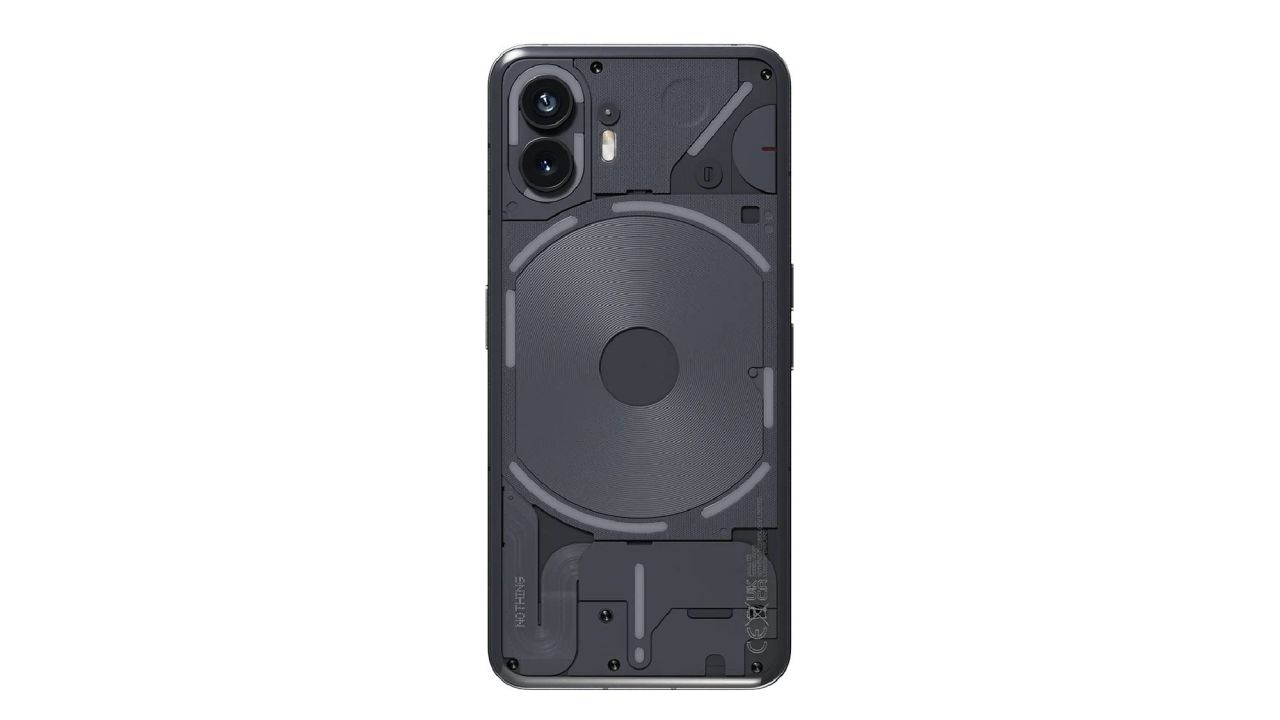Is Nothing's Phone (2) The Future Of Modular Smartphones?

Table of Contents
Keywords: Nothing Phone (2), modular smartphones, customizable smartphones, smartphone customization, future of smartphones, modular phone technology, phone accessories, Glyph interface, Nothing OS
Nothing's Phone (2) has generated significant buzz, particularly for its unique design and purportedly modular capabilities. But does it truly represent a leap forward in modular smartphone technology, and is this the future of customizable handsets? Let's dive into the details and explore whether Nothing's approach can revolutionize the mobile phone landscape.
Nothing Phone (2)'s Modular Design: What Makes it Unique?
The Glyph Interface and its Expansion Potential:
The Glyph interface, Nothing's signature design element on the Phone (2)'s back, is more than just an aesthetic choice. Its array of LEDs offers a unique way to interact with notifications and customize the phone's visual feedback. While currently limited in its true modularity, the Glyph interface holds significant potential for future expansion. Imagine future Glyph modules offering additional functionality, such as:
- Expanded notification options: Different Glyph patterns for specific apps or contacts.
- Interactive game elements: The Glyph interface acting as a visual indicator during gameplay.
- Customizable light shows: Users creating and downloading personalized light patterns.
- Charging indicator: A dynamic display showing the charging status.
The aesthetic appeal of the Glyph interface and its associated brand recognition are significant factors in Nothing's marketing strategy. However, its current implementation is more about visual customization than true hardware modularity. The Glyph lights themselves are not interchangeable or expandable in a way that significantly alters the Phone (2)'s core functionality.
Current Accessory Compatibility and Limitations:
Currently, Nothing offers a range of accessories compatible with the Phone (2), including cases and charging accessories. While these accessories enhance the user experience, they don't represent a significant leap in modularity compared to other smartphone brands. Many other manufacturers offer similar, if not more extensive, accessory ranges.
- Limitations: Existing accessories primarily focus on protection and charging; there aren't readily swappable components that significantly alter the phone's core capabilities.
- Comparison to competitors: While some companies offer modular camera systems or battery packs, Nothing's approach remains relatively limited in its current form.
The Advantages and Disadvantages of Modular Smartphones
Advantages:
-
Extensibility and Customization: Modular smartphones offer the exciting possibility of extending functionality beyond what's built-in. Imagine adding a high-resolution camera module, a powerful battery pack, or even specialized sensors for specific tasks. This level of customization caters to individual needs and preferences.
-
Repairability and Sustainability: Easily replaceable parts mean longer lifespans for devices. Instead of discarding a phone due to a broken battery or screen, users can simply replace the faulty component, reducing electronic waste and saving money.
-
Upgradability: Rather than buying a completely new phone every few years, users can upgrade individual components as technology advances. This approach extends the value and lifespan of the device significantly.
-
Specific Examples: A user could upgrade their camera module to a higher megapixel count, swap a worn-out battery for a new one, or even add a specialized module for underwater photography.
Disadvantages:
-
Increased Complexity: Designing, manufacturing, and assembling modular smartphones is inherently more complex than creating traditional, monolithic devices. This complexity can lead to higher production costs and potential issues with compatibility.
-
Higher Cost: The added complexity of modular design often results in a higher initial purchase price for both the phone and its individual modules.
-
Durability Concerns: The connections between modules are potential points of failure. Dust, moisture, or physical impacts could compromise the connections, impacting the phone's functionality and durability.
-
Specific Examples: The complexity of designing robust interconnections could lead to manufacturing challenges. Higher costs might limit the accessibility of modular phones to a niche market. Loose connections could lead to malfunctions.
The Future of Modular Smartphones: Beyond Nothing Phone (2)
Industry Trends and Innovation:
The modular smartphone market remains relatively niche, but there is a growing interest in sustainable and customizable devices. Several companies are exploring various modular approaches, focusing on specific areas like camera systems and battery technology.
Potential Future Developments:
Future modular smartphones could offer:
- Interchangeable cameras: High-quality camera modules tailored for different photography styles (e.g., macro, wide-angle, telephoto).
- High-capacity batteries: Easily swappable battery packs for extended usage times.
- Upgradable processors: The ability to upgrade the phone's processing power as new processors are released.
Barriers to Widespread Adoption:
Despite their potential benefits, several factors hinder the widespread adoption of modular smartphones:
- Cost: Higher manufacturing costs translate to higher prices for consumers, making them less accessible to the mass market.
- Complexity: The complexity of design and manufacturing increases the risk of compatibility issues and potential malfunctions.
- Market Demand: The current consumer demand for modular smartphones remains relatively low, discouraging investment and innovation from major players.
Conclusion:
Nothing Phone (2) represents a step in the right direction towards a more modular smartphone approach, particularly with its unique Glyph interface. However, whether it truly represents the future of modular smartphones remains uncertain. While the advantages of extensibility, repairability, and upgradability are compelling, challenges related to cost, complexity, and durability need to be overcome. The true potential of modular smartphones will depend on continued innovation and a growing market demand for such devices. Keep an eye on future developments in the field of modular smartphones and customizable smartphones to see if Nothing's approach truly paves the way for a more versatile and sustainable mobile future. Consider researching other modular phone technology options as well to gain a broader perspective.

Featured Posts
-
 Deep Concerns Expressed Over Police Accountability Review Process
Apr 30, 2025
Deep Concerns Expressed Over Police Accountability Review Process
Apr 30, 2025 -
 Uks Eurovision 2025 Act Revealed A Familiar Face
Apr 30, 2025
Uks Eurovision 2025 Act Revealed A Familiar Face
Apr 30, 2025 -
 Amanda Owens Ambitious Plans After Split From Ex Husband
Apr 30, 2025
Amanda Owens Ambitious Plans After Split From Ex Husband
Apr 30, 2025 -
 Tanner Bibees First Pitch Homer Guardians Comeback Victory Over Yankees
Apr 30, 2025
Tanner Bibees First Pitch Homer Guardians Comeback Victory Over Yankees
Apr 30, 2025 -
 Channing Tatum And Inka Williams A Complete Relationship Timeline
Apr 30, 2025
Channing Tatum And Inka Williams A Complete Relationship Timeline
Apr 30, 2025
